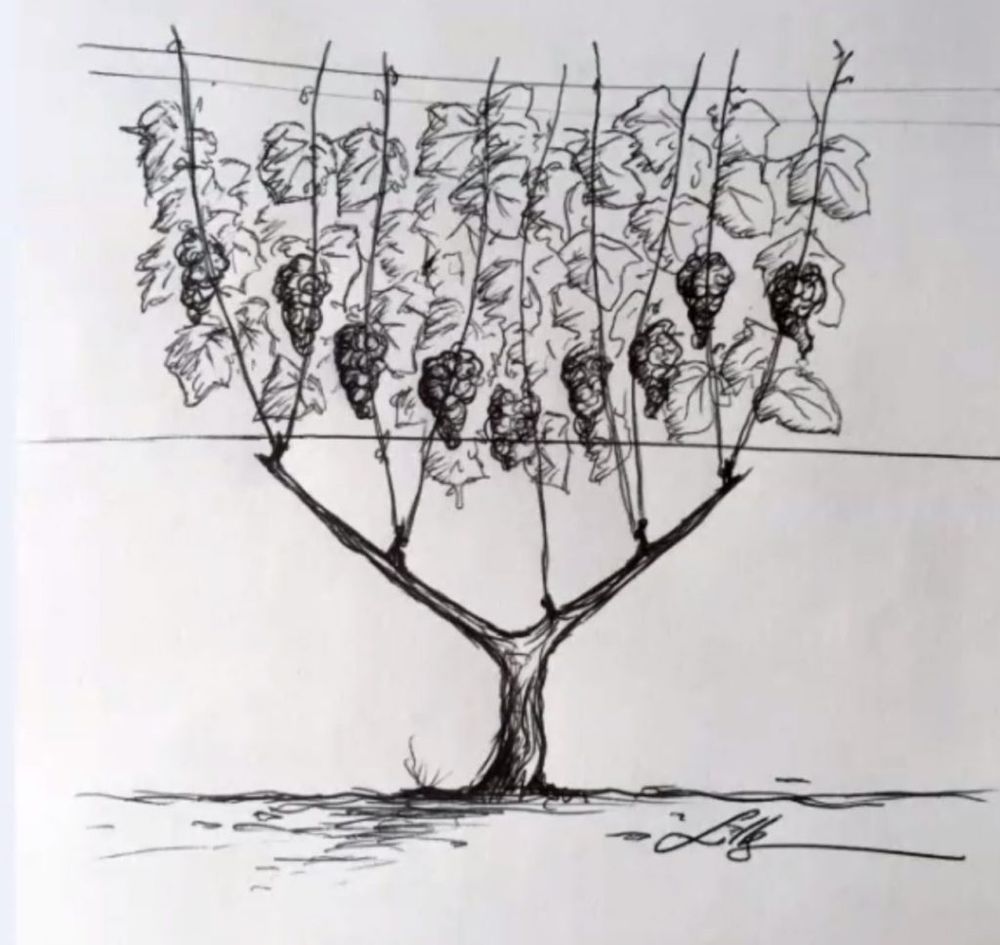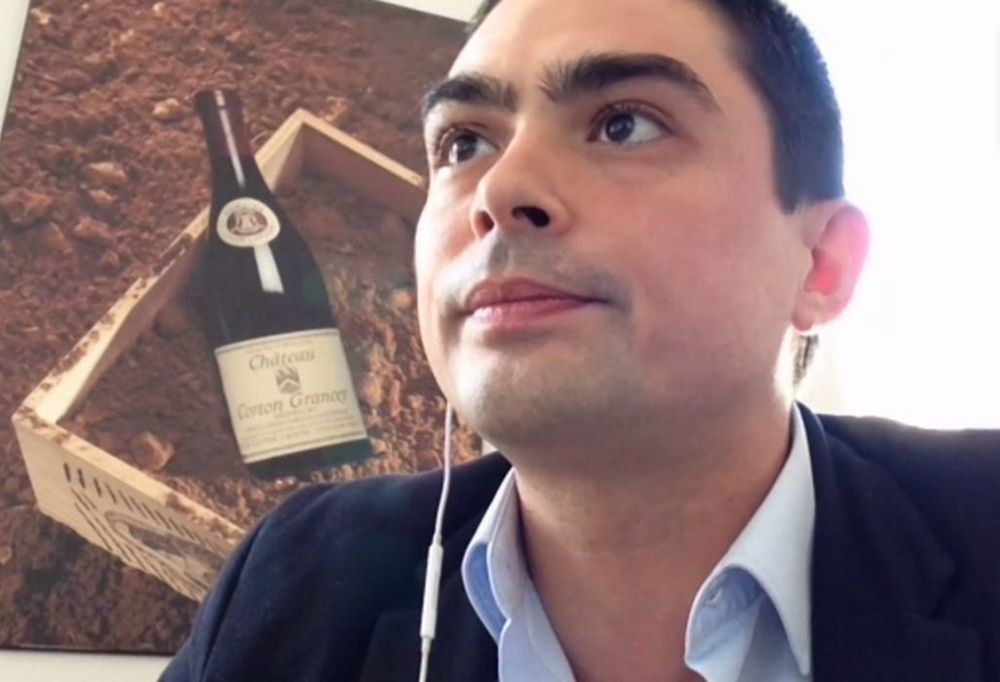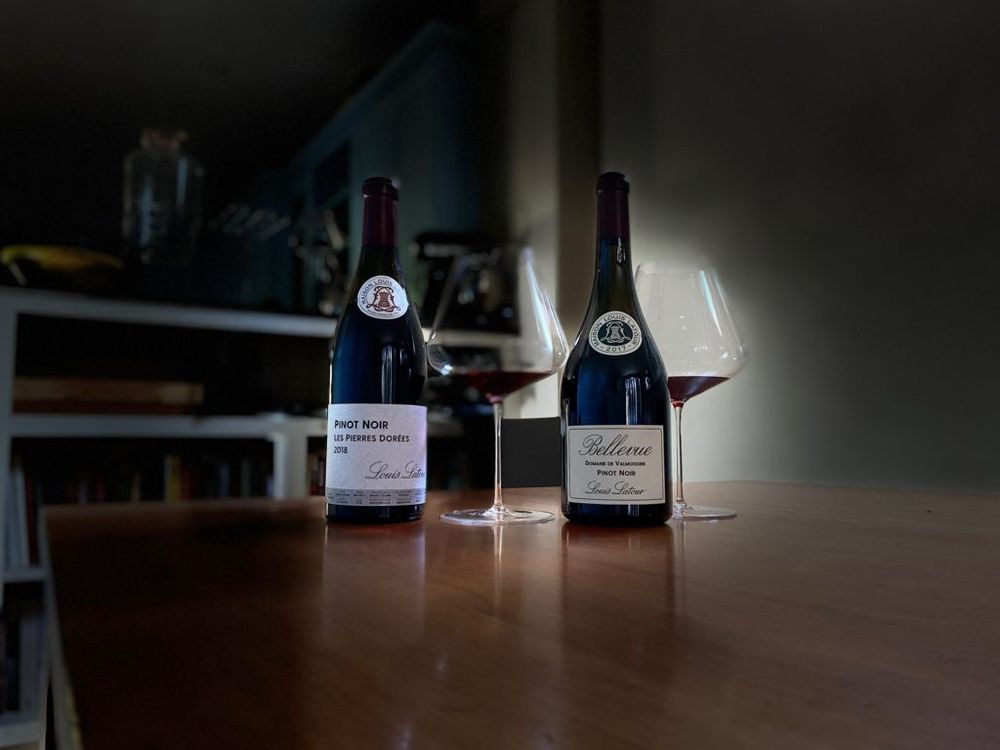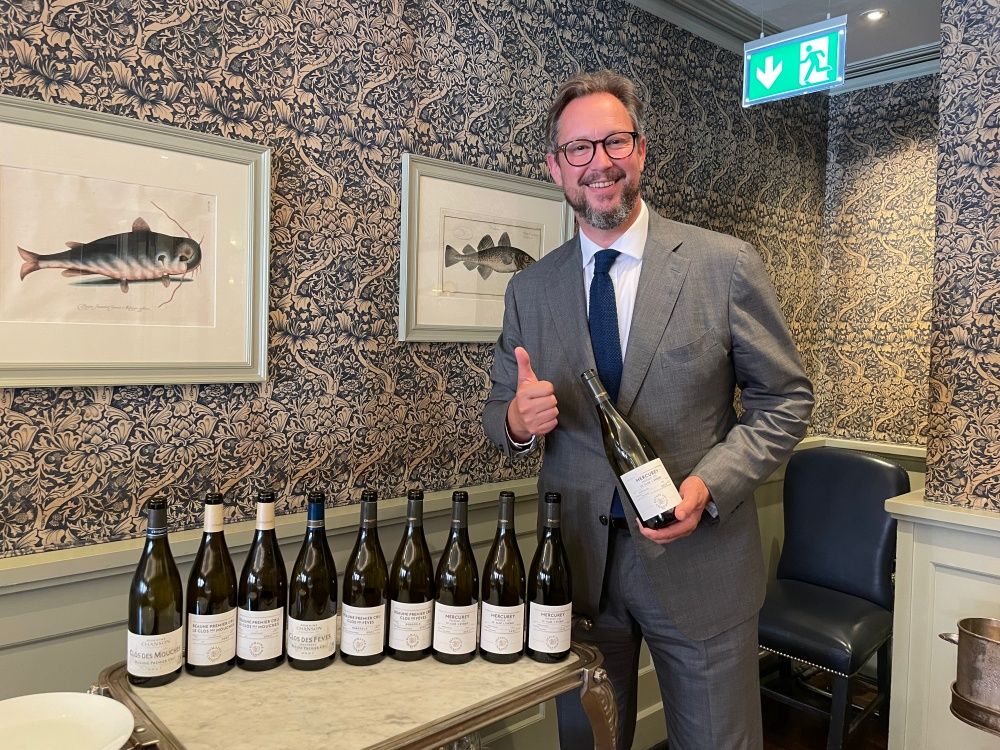A key aspect of the House’s strategy to make Pinot Noir beyond Burgundy – in Beaujolais and Provence – is to have wines that are more affordable and not subject to the wild fluctuations and inconsistency of pricing within Bourgogne.
A decade after Jean Latour bought land in the Ardèche to produce a new style of Chardonnay he acquired land in 1989 in the foothills of the Verdon, a plot of clay-limestone soils 500m up in Provence, with the vision of making a great Pinot Noir.
The estate, Domaine de Valmoissine, based around an old monk’s college, has since grown to 100 hectares, with the altitude allowing fruit to gain full ripeness in the Provencal heat but, most importantly, to allow the vines to cool down at night giving them some much-needed ‘after sun’ recovery time.

“The Var has been harder to launch, it was older and it involved heavy investment in the vineyard – it was a big challenge.”
For almost 30 years producing one thoroughly respectable estate wine Domaine de Valmoissine – always a big hit in Majestic – Louis Latour has launched Bellevue, a top cuvée from three small parcels near the village of Moissac-Bellevue, with finessing made all the way through the winemaking process.
“We had had great success in the Ardèche at the end of the 80s with pure clay soil which is good for Chardonnay but not Pinot Noir,” explains Florian Migeon, the company’s brand ambassador, “We always had the idea we’d have a ‘Grand Vin’ a higher cuvée of the Domaine de Valmoissine with a different stylistic character and different vinification. We made trials but it was hard to scale up. The level was not up to what we expected.”
“Eventually we selected three plots – super small – hand harvested, de-stemmed and sorted on the spot which is unusual for an IGP wine. We went longer on alcoholic fermentation to extract more tannins.”

The double Guyot style of vine used for fruit in Bellevue
Migeon explains how the selected parcels are planted at 4,300 plants per ha – 2.2 metres between rows and 1 metre between plants with a yield that is a low 35/6 hectolitres per hectare “that’s the yield of a Grand Cru,” he says. A different style of pruning was chosen so, whereas the fruit for the Domaine de Valmoissine wine is single Guyot, for Bellevue it is the double Guyot style, which allows better circulation of sap to the fruit and gives greater homogeneity to its ripeness.
The end result is 17,000 bottles of its first vintage of Bellevue Domaine de Valmoissine 2017.
“Whereas the Ardeche was an instant success the Var has been harder to launch, it was older and we had to invest in the site, it involved heavy investment in the vineyard – it was a big challenge,” Migeon says.
The philosophy of Latour is to expand into other winegrowing regions when it sees opportunities for either Chardonnay or Pinot Noir – unsurprisingly for a Burgundy house.

Florian Migeon, May 20, 2020
“When we decide we want to do something outside Burgundy it is always these two grapes. And as the prices are going up we think it’s good to think ahead of time, what are we going to drink? what are we going to add that is affordable in our range?”
“Burgundy was fluctuating in price, and the quality is not linked with price every year, it is the scarcity of product that makes it more expensive, so we decided to go outside to find quality vineyards and make quality wine with a stable price longterm.” Migeon says.
Burgundy moving south to Beaujolais
When your company is a family-owned house with its own cooperage and 48 hectares of prime Cote d’Or vineyard, strategic growth like moving into the Var, Chablis and Beaujolais can be less problematic and be based solely around winemaking decisions.
Burgundy has been moving South for many years, of course, with Jadot’s purchase of Château St Jacques being just one marquee acquisition. It is to the credit of Louis Latour that, since 2015 when they started producing vintages of their Beaujolais-sourced Pinot Noir, Les Pierres Dorées, other Burgundy producers have followed suit – not to buy into Gamay but Pinot.
“When we started to explore the South Beaujolais region in 2010 we found that the subsoil, clay and limestone, is not so great for Gamay which prefers granite, when it grows on clay and limestone it can be too ‘easy’. What we have here is a nice exposition, nice altitude – 20 hectares planted at a lighter density than Burgundy but at the same altitude.”
It is also, compared to Burgundian real estate, dirt cheap, and an area that was in decline for many years, following the over-cropping of Beaujolais in the 70s and 80s. This specific site had always been recognised as a good spot for Pinot, however, with some grown unofficially, the reason why of the 20 hectares Latour farms, 1.5 hectares are old vines. In addition to Latour property the estate has a contract for a further five hectares, which is the reason it cannot put ‘domaine’ on the label.
“We always wanted to have local people involved in the project,” Migeon says.
Once the appellation Coteaux Bourguignons was officially declared in 2011, Latour started planting vines at a density of only 6,000 per hectare (where 11,000 plants is the norm in the Côte d’Or) with 1.8 metres between rows and 90 cm between plants.

The first vintage in the vineyard
Since the first vintage of Les Pierres Dorées in 2015 the company has made tweaks to the production process. The harvest was originally hand-harvested but that is now mechanised to keep costs down, the grapes arrive in Beaune by truck de-stemmed, and the fruit sorted into a new micro cuverie, with no oak used, unlike the first two vintages. Volumes have increased accordingly, where 1000 cases were produced in 2015, there are now 7000.
The wine’s front label, which includes all manner of detail such as the planting density, soil, exposition and so on, is very un-Burgundian “Louis Fabrice (Latour) wanted to show the family but also wanted to show that it is a modern wine – it helps you understand our philosophy – we can’t put domaine so we wanted to show we are doing things from the vineyard and we are not buying bulk wine, it is a more modern and informative approach.”
“With both wines we want to show it is the same house crafting the wine but it is not the same soil in the wine – this is important to show, they are not ’entry level’ but rather a start of our prices, to show that, even at this level we take care of the personality of the wine.”
So how were Bellevue Domaine de Valmoissine 2017 and Les Pierres Dorées 2018 tasting?

A tale of two Pinots
Both wines are very true of their terroir. The Pierres Dorées has a Beaujolais crispy feel to the fruit, even though the soil is clay and limestone and not granite, but there is the same crunch you get with Gamay – but that could possibly be psychological, perhaps tasted blind you would think differently.
The Bellevue feels like it has had a good whack of hot sun, even though the very high altitude gives the wine a decent spine of acidity. Whether it was intended or not the Pierres Dorées is more your Beaune-style Pinot while Bellevue is more Côtes de Nuits.
Pinot Noir Les Pierres Dorées, Louis Latour, 2018
Light, bright, red fruit nose, a bit of blueberry, crunchy palate, fine tannins with a lick of rhubarb on the finish. Very gastronomic and versatile with food pairing. Quite fun and precocious; having tasted every vintage I feel this has moved on a lot and you are starting feel more the age of the vines. RRP £18-20
Bellevue, Domaine de Valmoissine Pinot Noir, Louis Latour, 2017
More broody, serious, darker with more extracted black fruit (mulberry and bramble) with a touch of garrigue on the nose. The palate is more rounded than the Les Pierres Dorées – structured, considerably more tannins and there is a tasty, savoury quality, a bit of spice with a tart lift on the finish. Great way to start a new cuvée. RRP £20-23
The wines of Louis Latour are distributed in the UK by Louis Latour Agencies, which is a Partner of The Buyer. Read more about them here.










































